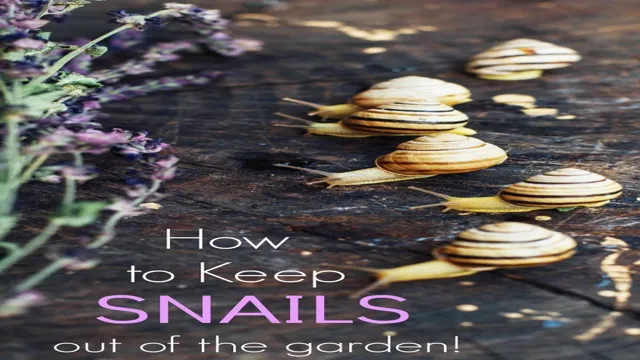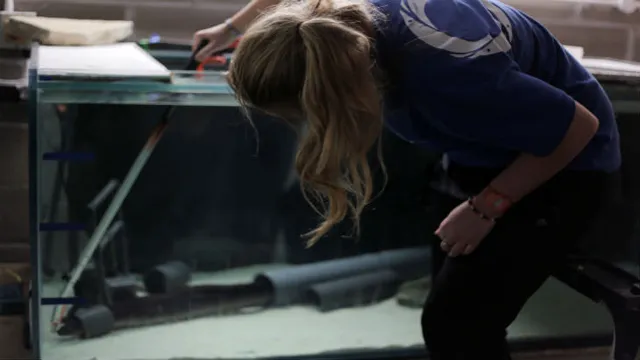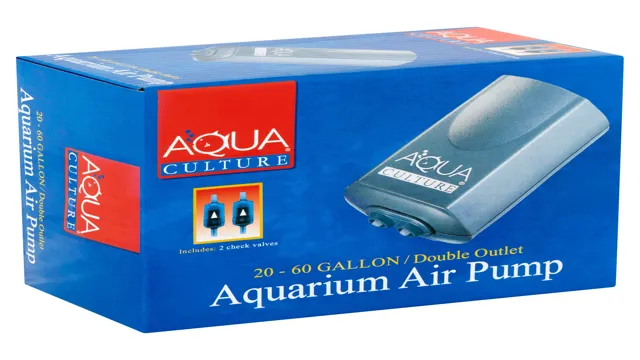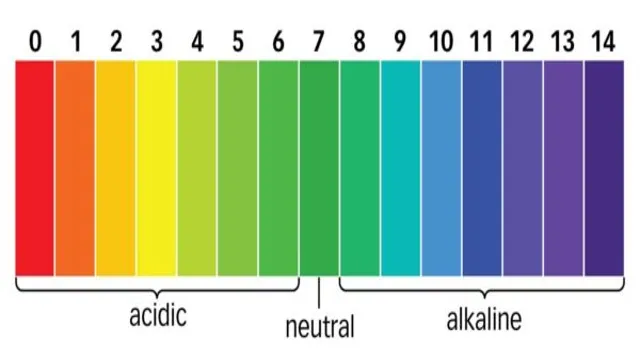Do you love having a beautiful aquarium in your home, but find yourself struggling to keep snails out? Don’t worry, you’re not alone! Snails can easily make their way into your aquarium and quickly become a nuisance, multiplying rapidly and eating your plants. But don’t let them take over – there are steps you can take to keep snails out of your aquarium for good! In this blog, we’ll explore some effective methods for keeping snails at bay and protecting your aquatic oasis. So, let’s dive in!
Understanding Snails in Aquariums
If you’re struggling to keep snails out of your aquarium, there are a few things you can do to prevent them from taking over. First and foremost, make sure you’re not overfeeding your fish. Snails thrive on leftover food, so keeping a clean tank is crucial.
You can also add snail-eating fish, like loaches or clownfish, to help keep the snail population under control. Another option is to use a snail trap, which can be placed in the tank to catch any snails that may be present. Additionally, avoid using chemicals or medications to kill snails, as this can harm other aquatic life in your tank.
With a little effort and patience, you can effectively keep snails out of your aquarium and maintain a healthy ecosystem for your fish to thrive in.
Types of Snails in Aquariums
If you’re an aquarium enthusiast, you’re probably aware of the many benefits to keeping snails in your tank. They can help keep it clean by eating algae and uneaten food, and they also provide a natural food source for your fish. But not all snails are created equal – there are actually many different types of snails you might encounter in your aquarium.
Some of the most common include apple snails, mystery snails, and ramshorn snails. Each type has its own unique appearance and behavior, so it’s important to understand what you’re dealing with. For example, apple snails are larger and tend to be more active, while ramshorn snails are smaller and more slow-moving.
By understanding the different types of snails in your aquarium, you can better care for them and ensure that your tank stays healthy and balanced.
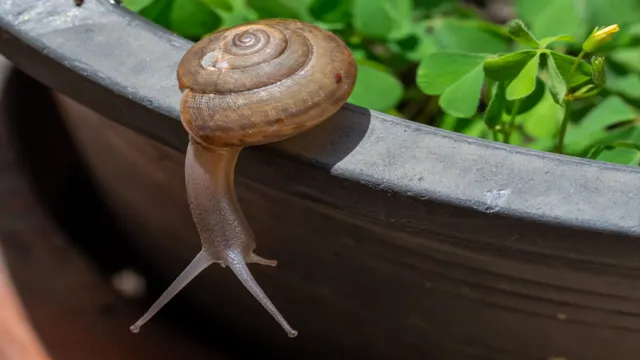
Why Snails Can Be a Problem
Snails Having snails in your aquarium can be a problem for a number of reasons. Firstly, they breed rapidly and can quickly take over the tank, competing with your fish for food and space. Secondly, some species of snails can be voracious eaters, and can cause a lot of damage to aquatic plants.
In addition, snails can be carriers of diseases and parasites that can be harmful to your fish. It’s important to understand the behavior of snails in your aquarium, as well as the specific species that you have, so that you can take appropriate action to control their population. This might include manually removing snails from the tank, or introducing a predator species to help keep their numbers in check.
Ultimately, it’s important to strike the right balance between maintaining a healthy ecosystem in your tank, and keeping unwanted pests at bay.
Preventative Measures
If you’ve ever had snails invade your aquarium, you know how frustrating it can be. Luckily, there are several preventative measures you can take to keep these pesky critters out. First and foremost, be sure to thoroughly clean any new plants or decorations before introducing them to your tank. (See Also: How to Maintain Aquarium Filter: The Ultimate Guide for Keeping Your Fish Tank Clean and Healthy)
Snails often hitch a ride on these items, so a quick hose down or even a bleach solution dip can go a long way in preventing an infestation. Additionally, consider adding some fish or invertebrates to your tank that enjoy snail snacks, such as loaches or assassin snails. Finally, keep your aquarium clean and well-maintained.
Overfeeding and a buildup of debris can create a habitat that’s perfect for snails to thrive in, so regular water changes and tank cleanings are crucial. By staying proactive and following these steps, you can keep snails out of your aquarium and maintain a healthy, happy environment for your aquatic pets.
Maintaining Cleanliness
Maintaining cleanliness is essential for keeping a healthy and hygienic environment. Preventive measures should be taken to ensure that cleanliness is maintained consistently. One of the best and most straightforward steps is to keep surfaces clean and dry.
Regularly wiping surfaces like countertops, tables, and floors with a cleaning solution can help remove bacteria and germs. It’s also important to declutter regularly, as large piles of dust and debris can harbor germs and bacteria. Another measure to take is to make sure that everyone entering the house or workplace washes their hands regularly and sanitizes frequently used objects like doorknobs.
Disinfecting surfaces, not just cleaning them, is another critical step in preventing the spread of germs. You can use a disinfectant spray to clean your surfaces or a disinfectant wipe for smaller areas like phones, remotes, or laptops. By taking these easy preventative measures, you can make sure your home or workplace is always neat, tidy, and hygienic.
Controlling Overfeeding
When it comes to preventing overfeeding in ourselves or our pets, there are a few key measures that we can take. Firstly, it’s important to pay attention to portion control and ensure that we are providing ourselves or our pets with the recommended serving sizes for meals and treats. Another important preventive measure is to establish a feeding schedule and limit grazing throughout the day.
This helps regulate hunger and prevent overeating. Additionally, avoiding too many high-calorie, fatty, or sugary foods can also help prevent overfeeding. By keeping these habits in check, we can ensure that we and our furry companions maintain a healthy weight and avoid the negative health consequences associated with overfeeding.
Quarantining New Additions
When adding a new pet to your household, it’s crucial to take preventative measures to ensure that they don’t bring any unwanted illnesses or parasites with them. Quarantining new additions is a key step in this process. By separating your new pet from your existing pets for a period of time, you can observe them for any signs of illness or disease, and prevent any spread of potential infections.
This is especially important if your new pet is coming from a shelter or breeding facility. It’s crucial to keep in mind that just like humans, animals can carry illnesses that may not show symptoms right away. Taking the time to properly quarantine your new addition can save you from a lot of headaches and heartaches later down the road.
Remember, prevention is always better than cure, and this is certainly true when it comes to the health and safety of your pets.
Natural Solutions
If you have an aquarium, then you’re probably aware of the pesky snails that can take over your tank if left unchecked. But fear not, there are natural solutions to keeping snails out of your aquarium. One solution is using snail-eating fish such as loaches or puffers, which will quickly take care of any snail infestation. (See Also: How to Circulate CO2 in Aquarium: Tips for Efficient Carbon Dioxide Distribution)
Another effective method is using copper-based treatments, which can be harmful to snails but safe for other aquatic life. You can also try adding snail traps, which are designed to attract and trap snails so you can easily remove them from your tank. Additionally, regularly cleaning your aquarium and removing any excess food, debris, or plants can help prevent snails from taking hold in the first place.
By using these natural solutions, you can keep your aquarium snail-free and ensure the health and happiness of your aquatic friends.
Introducing Predators
Are you tired of constantly dealing with pests in your garden? Maybe it’s time to introduce natural predators, such as ladybugs, lacewings, and praying mantises, into your ecosystem. These beneficial insects not only help control unwanted pests but also aid in pollination and soil health. Ladybugs, in particular, are great for controlling aphids, while lacewings feed on spider mites and mealybugs.
Praying mantises are excellent for getting rid of larger pests like caterpillars and grasshoppers. Plus, these natural solutions are environmentally friendly and promote a healthier ecosystem. Give your garden a boost by introducing these helpful predators and watch as they work their magic.
Your plants will thank you for it!
Using Chemical-Free Substances
Chemical-free substances are a great way to achieve a cleaner and more sustainable household. Many of us don’t realize the harm that traditional cleaning agents can cause to the environment and our health. Thankfully, there are natural solutions that can be used instead.
Essential oils and vinegar are two great examples of chemical-free substances that can be used to clean a variety of surfaces, from countertops to floors. Not only are these options not harmful to our health, but they can also be very effective. For example, vinegar is an excellent disinfectant and can be used to clean and disinfect many surfaces.
Similarly, essential oils can be used as an antibacterial and antifungal agent, making them a great choice for cleaning bathrooms and kitchens. By using these natural substances, we can take a step towards a cleaner and healthier home, without harming the environment. So, next time you need to clean your home, consider using chemical-free substances for a more sustainable option that is just as effective.
In Conclusion
In conclusion, keeping snails out of your aquarium is a tricky task that requires patience and effort. However, there are simple steps you can take to prevent them from invading your aquatic paradise. From introducing snail-eating fish to monitoring water conditions, there are various solutions to this common problem.
So, next time you spot an unwelcome gastropod crawling on your plants, just remember that with a little creativity and perseverance, you can keep your aquarium free from unwanted snail visitors. Don’t let them steal the show; take control and make your aquarium shine like it was always meant to.” (See Also: How to Fix a Finnex Aquarium Light: A Comprehensive Guide to Troubleshooting and Maintenance)
FAQs
What attracts snails to an aquarium?
Snails are attracted to aquariums with a lot of algae growth and excess food left over in the tank.
How can I prevent snails from entering my aquarium?
To prevent snails from entering your aquarium, you can use a snail trap or quarantine any new aquatic plants or decorations before introducing them to the tank.
Can snails harm my aquarium plants or fish?
Depending on the species, some snails can feed on live plants which can harm them. Additionally, if there is an overpopulation of snails, they can consume excess amounts of fish food, leading to poor water quality and potential harm to fish.
What are some natural snail repellents for aquariums?
Adding certain types of plants, such as Java fern or Anubias, can deter snails, as well as using crushed eggshells or copper strips on the bottom of the tank.
How often should I clean my aquarium to prevent snails?
Regular cleaning and maintenance of your aquarium, including removing any excess food or debris, can help prevent snails from becoming an issue. It is recommended to clean the tank once a week or as needed.
Can snails be beneficial in an aquarium?
Yes, snails can help clean the tank by eating algae and excess food, and their waste can also serve as a natural fertilizer for aquarium plants.
What should I do if I already have an infestation of snails in my aquarium?
You can physically remove them as much as possible and use a snail-specific treatment or a natural predator, such as a loach or assassin snail, to help control the population. It is important to address the cause of the infestation (such as excess food or poor water quality) to prevent future issues.

